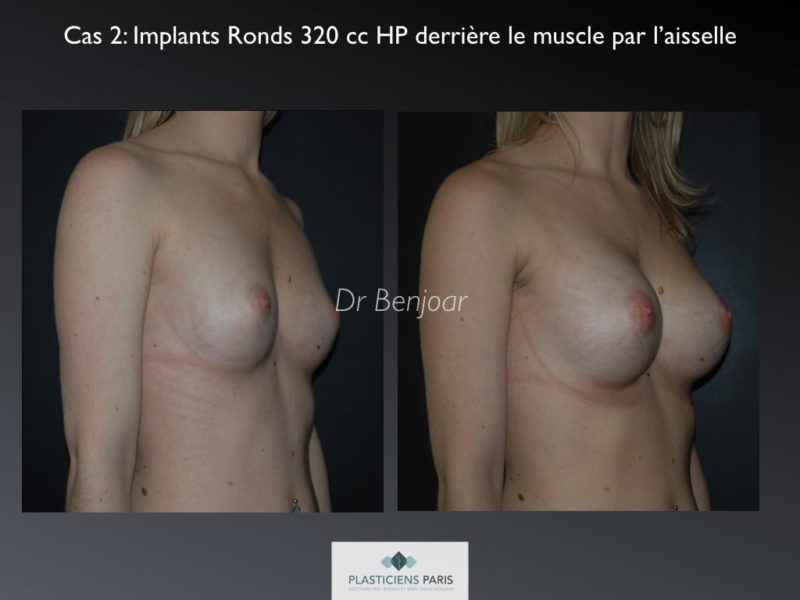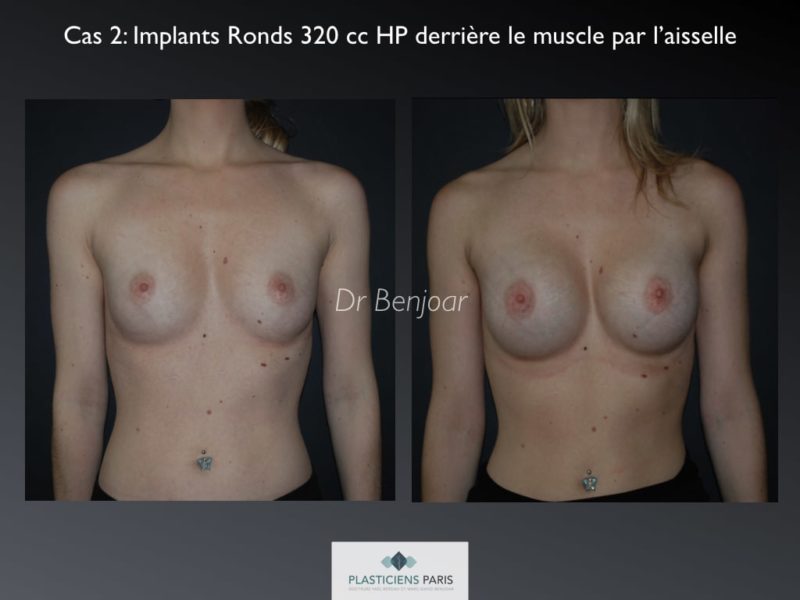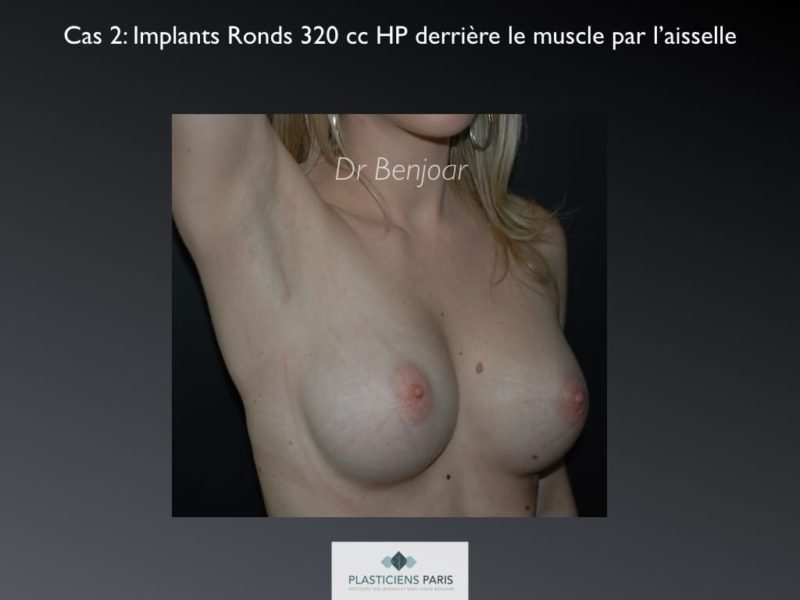Frequently asked questions about breast augmentation
Answers to questions you may have about breast augmentation surgery.
Before making an appointment, you may have a number of questions about cosmetic surgery for breast augmentation in Paris. On this page, we answer the most frequently asked questions. If you don't find the answer you're looking for, we'll be happy to answer you personally.
Why have a breast augmentation?
Aesthetic breast augmentation surgery aims to respond to a woman's physical and psychological suffering. The placement of silicone implants simply allows for a stable increase in breast volume, which brings a proven benefit in terms of quality of life for patients with breast complexes.
Which surgeon to choose for breast augmentation
Breast augmentation with silicone implants is highly regulated in France. It must be performed by a surgeon with a degree in plastic, reconstructive and aesthetic surgery. He or she must practice in a health establishment approved for cosmetic surgery. There are approximately 150 surgeons with these characteristics in the Ile de France region and 700 in France. Your choice is then based on the surgeon's reputation and on the relationship of trust that you establish with him during the consultation. The price of the operation, even if it is an important criterion, should not be your only criterion of decision.
What are the consultations before a breast augmentation?
The first paid consultation is with your plastic surgeon. It lasts about 30 minutes. The surgeon will examine you and explain the surgical technique best suited to your case. Prosthesis size tests are performed as well as photographs. At the end of the consultation, the surgeon will give you an estimate with a specific information sheet. A 15-day reflection period is then required by law. If you wish to continue with the procedure, a second free consultation is organized with the surgeon as well as a paid consultation with the anaesthetist in view of the operation.
Which scar to choose for a breast augmentation?
There are 3 types of scars possible for a breast augmentation. We prefer to avoid the scar around the areola because it involves cutting the mammary gland to access the future implant site (in front or behind the muscle). This releases bacteria from the breast which multiplies by 3 the rate of shells (hardening). We prefer scars under the breast (in more than 50% of cases) or in the armpit (in more than 40% of our cases). The scars measure approximately 4 cm.
What to choose: in front or behind the muscle?
It all depends on the thickness of your tissues in your cleavage. If your tissues are thick (by pinching the skin between 2 fingers, the tissues are thicker than 3 cm), we recommend placing the implant in front of the muscle under the fascia. If your tissues are thin, it is preferable to place the implant behind the muscle.

How is a breast augmentation performed?
You will enter the clinic in the morning on an empty stomach and be installed in your room. You are then transferred to the operating room where the anesthesiologist and the surgeon will perform the final checks before the operation. The surgery lasts on average 1 hour. You will then stay in the recovery room for 1 hour before returning to your room. Approximately 8 hours after your admission, the surgeon will come back to see you before your return home. Surgery is performed on an outpatient basis in over 90% of cases.
What type of anesthesia for a breast augmentation?
In the vast majority of cases, the procedure is performed under general anesthesia, especially if the implant is placed behind the muscle. In some cases, especially when the implant is placed in front of the muscle, the procedure can be performed under local anesthesia and hypnosis.
What is the pain after a breast augmentation?
The pain is very moderate (2 out of 10) when the implant is placed in front of the muscle. They are more important when it is behind the muscle (4 to 5 out of 10). In order to limit this pain, the anesthesiologists at the Alma Clinic use the PECS block technique, which consists of anesthetizing the sensory nerves of the thorax for 24 hours. The patients have much less pain and can leave the evening of the operation in the majority of cases.
What are the surgical risks associated with breast augmentation?
The immediate operative risks of a breast augmentation are very low. Anesthetic accidents are extremely rare in healthy people. It is estimated that the risk of anesthesia is less than one in 5 million. The main risk after a breast augmentation is bleeding upon awakening. This is called hematoma. It is estimated that it occurs in one case out of 200, most often within 6 hours after the operation and requires a return to the operating room to evacuate the blood and cauterize the bleeding.
Which size to choose for breast augmentation: 320 cc or 90 cc?
The ideal size is the one you really want. In order to make your choice, it is important to do some tests with your surgeon who will, during a consultation, have you try external implants in a sports bra. When the size suits you, we choose the final implant according to your choice. In France, the average size of implants placed is 320 cc or an increase of about 2 cups.
How is a breast augmentation performed?
You will enter the clinic in the morning on an empty stomach and be installed in your room. You are then transferred to the operating room where the anesthesiologist and the surgeon will perform the final checks before the operation. The surgery lasts on average 1 hour. You will then stay in the recovery room for 1 hour before returning to your room. Approximately 8 hours after your admission, the surgeon will come back to see you before your return home. Surgery is performed on an outpatient basis in over 90% of cases.
What type of anesthesia for a breast augmentation?
In the vast majority of cases, the procedure is performed under general anesthesia, especially if the implant is placed behind the muscle. In some cases, especially when the implant is placed in front of the muscle, the procedure can be performed under local anesthesia and hypnosis.
What is the pain after a breast augmentation?
The pain is very moderate (2 out of 10) when the implant is placed in front of the muscle. They are more important when it is behind the muscle (4 to 5 out of 10). In order to limit this pain, the anesthesiologists at the Alma Clinic use the PECS block technique, which consists of anesthetizing the sensory nerves of the thorax for 24 hours. The patients have much less pain and can leave the evening of the operation in the majority of cases.
What are the surgical risks associated with breast augmentation?
The immediate operative risks of a breast augmentation are very low. Anesthetic accidents are extremely rare in healthy people. It is estimated that the risk of anesthesia is less than one in 5 million. The main risk after a breast augmentation is bleeding upon awakening. This is called hematoma. It is estimated that it occurs in one case out of 200, most often within 6 hours after the operation and requires a return to the operating room to evacuate the blood and cauterize the bleeding.
What size for breast augmentation?
The ideal size is the one you really want. In order to make your choice, it is important to do some tests with your surgeon who will, during a consultation, have you try external implants in a sports bra. When the size suits you, we choose the final implant according to your choice. In France, the average size of implants placed is 320 cc or an increase of about 2 cups.

What is the relationship between breast augmentation and final cup size?
One cup of bra corresponds to 160 cc of silicone implant. A 320 cc implant will give you 2 cups (90 A to 90 C), a 480 cc implant 3 cups (90 B to 90 E)
Which brand of breast prosthesis to choose?
There are 7 brands of breast implants available in France. We only work with 3 types of prosthesis that we believe offer the best results in the short, medium and long term: Mentor, Motiva and Polytech Health. Find out more about which brand of breast implant to choose.
What is the price of a breast augmentation?
The price of a silicone breast augmentation varies between 5,000 and 8,000 euros.
The cost varies depending on whether or not you choose to spend the night at the clinic, and whether or not you opt for an underarm scar (a more complex operation requiring the use of a camera or endoscope). For more information, please consult the page on the cost of breast augmentation with implants.
How to get reimbursed for a breast augmentation?
Breast augmentation is covered by the French social security system, but only in very specific cases. You must have very underdeveloped breasts that do not fill an A cup. In this case, we'll give you a preliminary agreement to send to your health insurance fund. You will then be called in by a medical officer, who will examine you and decide whether or not to cover the cost of the operation.
How to finance a breast augmentation?
We propose a facility of payment in 4 times up to 2300 euros. A financing file is established by our assistant with Cofidis by providing you with your credit card, your bank account number and an identity document. You must not have been banned from banking and you must not have any current financing with Cofidis.
Which bra after breast augmentation?
We recommend wearing a Medical Z Bra combined with a support bra if you choose to have the scar under the armpit. This bra should be worn as much as possible for 15 days. Thereafter, you can wear your new bra with underwire.
What can be done after a breast augmentation?
It is necessary to lead a normal life but avoid carrying heavy loads (child, mineral water pack ...) and intense efforts during the 10 days following the operation. Non-physical work can be resumed 48 hours after the operation. Sport is resumed gradually between 6 weeks and 3 months after surgery.
How long does a breast prosthesis last?
A breast prosthesis has a limited lifespan of between 10 and 15 years, which is why you should think about changing your breast prosthesis.
Have a question? Please contact us!
Cosmetic surgery in Paris
Docteur Yaël Berdah and Docteur Marc-David Benjoar
Plastic surgeons in Paris France

